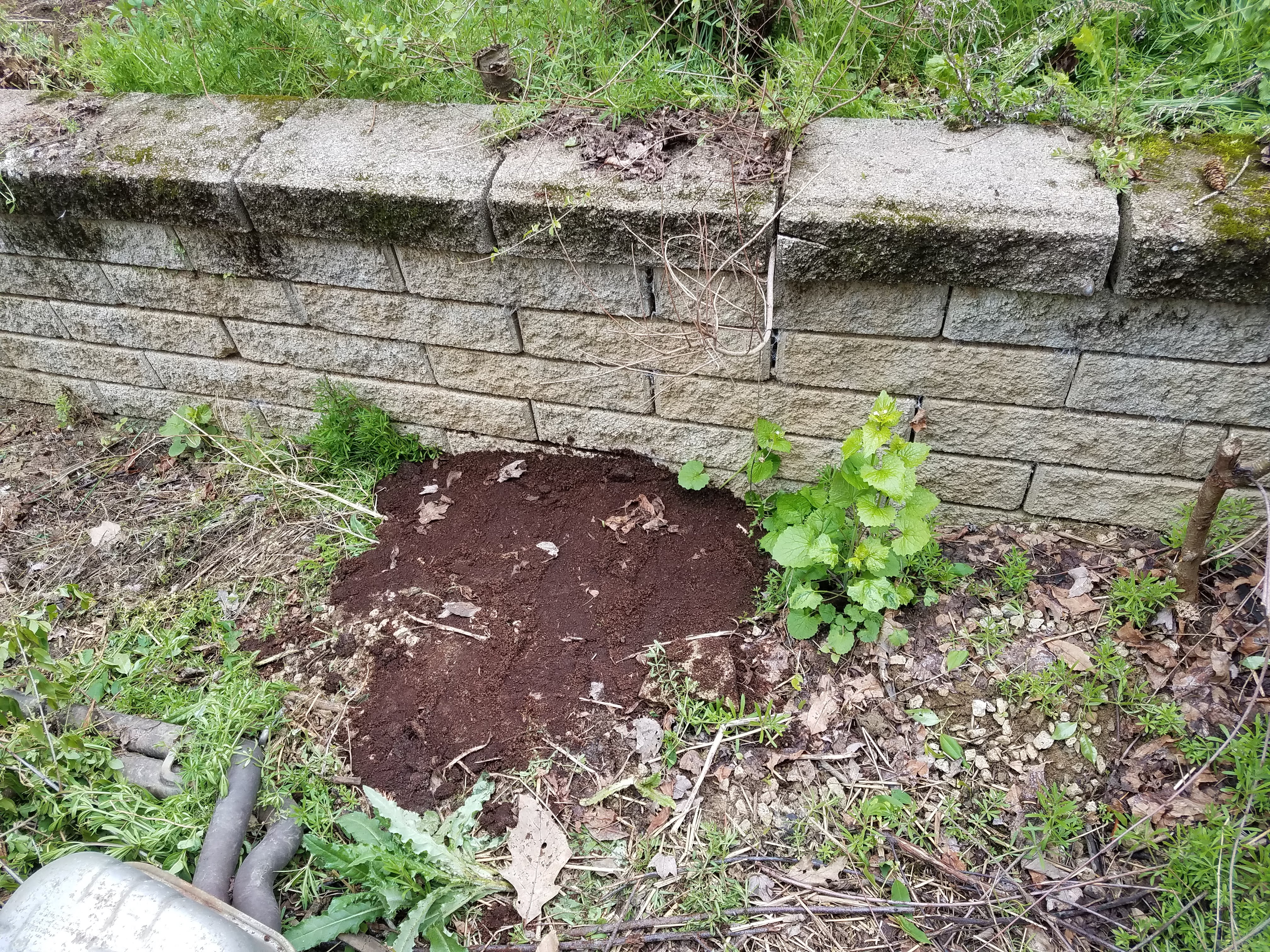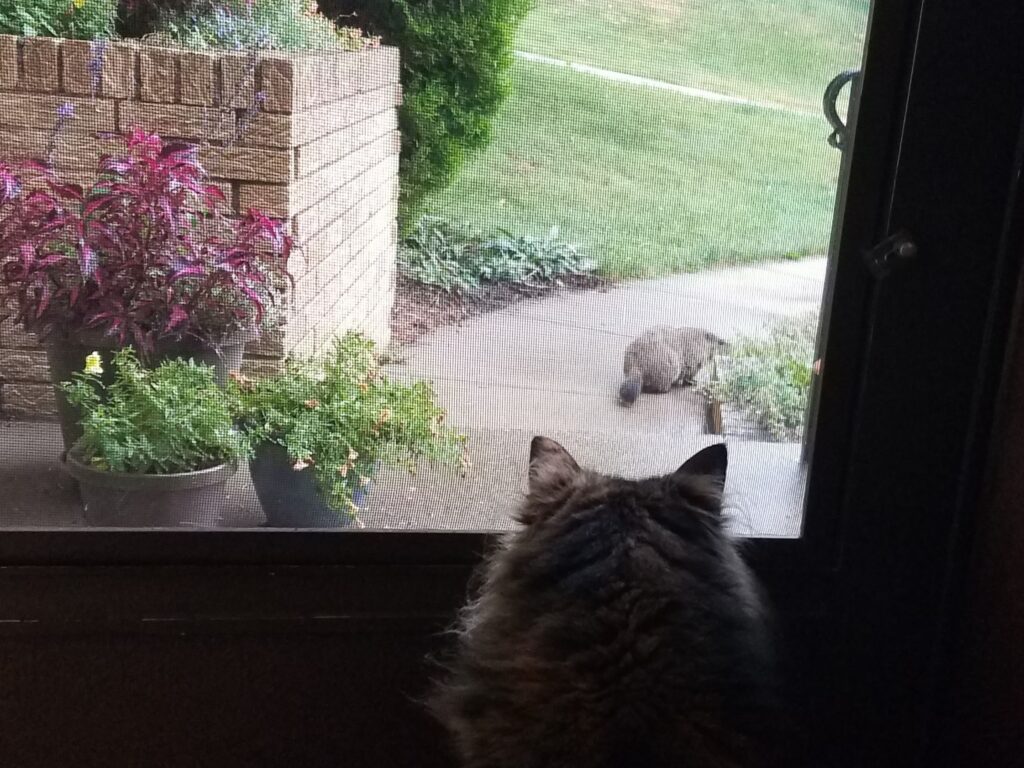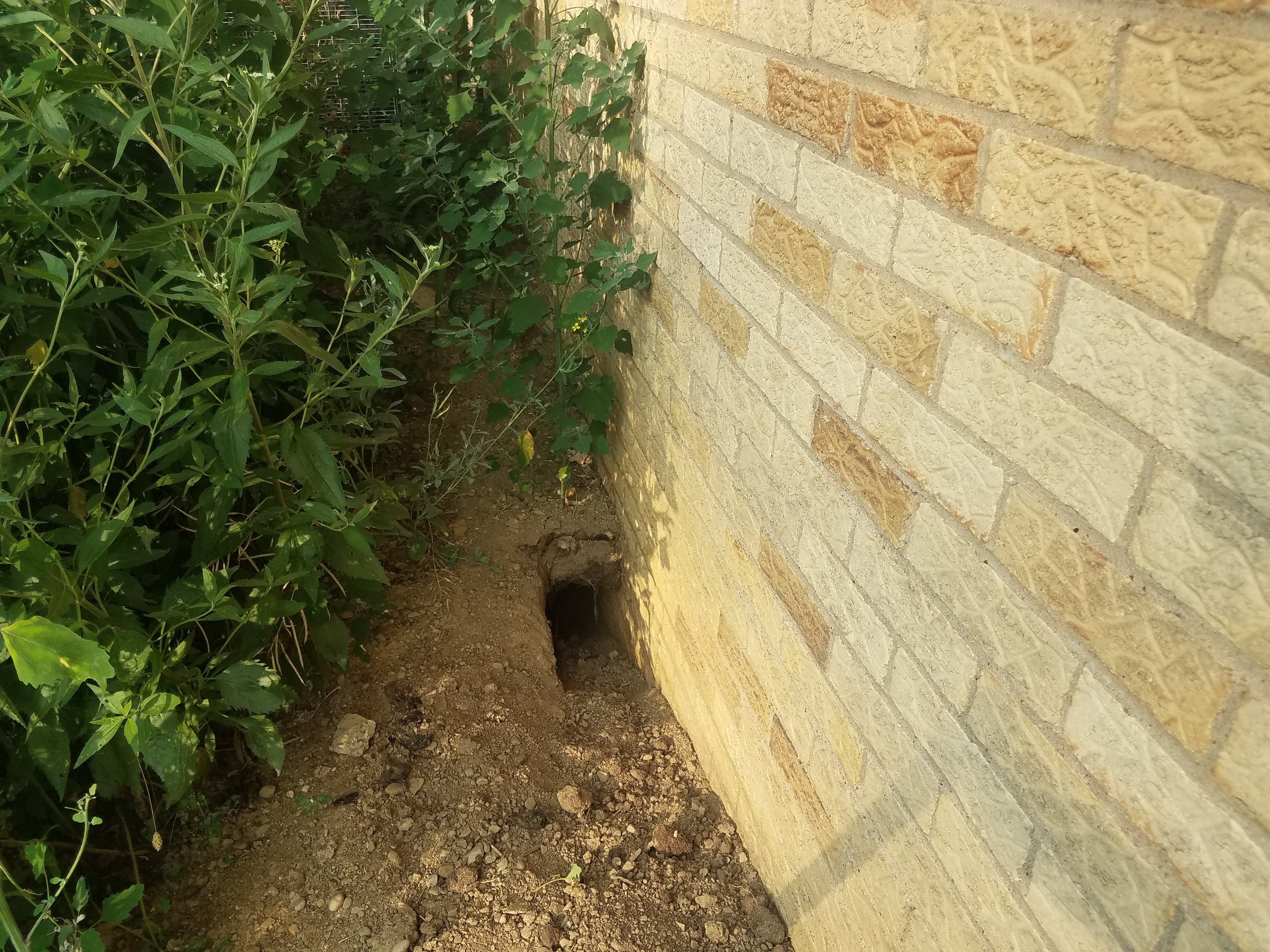One of my ongoing struggles in the yard (of which there are many) is filling and refilling groundhog holes. While I do love all animals and understand that groundhogs need to live somewhere and eat too, just their presence can cause damage to homes and be dangerous to other animals. For that reason, I have been trying to encourage them off of our property for a few years. During that time we’ve tried a few methods to varying levels of success.
A Formidable Opponent
There’s, of course, no way to know if these are the same groundhogs I’ve been battling with the whole time, but they live an average of three years in the wild, so I could be encountering multiple generations of the same family. There’s a possibility that when I get rid of some, new ones move in. Groundhogs are highly intelligent, form complex social networks, and work cooperatively to overcome challenges. Although they are somewhat solitary, several individuals can occupy the same burrow.
Working together over several years, groundhogs can make some rather large and complex burrows that can eventually undermine structures above, such as concrete slabs for porches, and even foundations for houses. The average groundhog burrow can be about 14 feet long, with several side rooms. The average mount of material removed to create a burrow is about six cubic feet of earth.[1] (I learned that six cubic feet is approximately 50 gallons… or roughly the size of one of my big garbage bins of compost).
I never really thought of them as a nuisance animal until college when I rode varsity equestrian. I remember the owner of the barn where we trained taking a shovel out to the pasture to find and kill groundhogs because the horses could step in the holes and break their ankles. I thought it was horrific to kill innocent animals who were just trying to live somewhere, but I also understood the consequences of a broken ankle to a horse… and the horse’s owners.

As urban sprawl increases and housing developments pop up, groundhogs continue to get pushed further out, slowly but surely. In populated areas, humans are their primary predator, through through both cars and pest control. I have no desire to kill them, but I also don’t want them in our yard. Not only have we experienced water leaks in our basement when burrows against the foundation fill with rain, but I’ve also seen a groundhog chase and fight with our feral cats, and I don’t want them getting injuries or diseases.
Rabies Risk
There are concerns about groundhogs carrying rabies. While they can, rabid groundhogs are reported far less frequently than raccoons, skunks, and foxes.[2] That doesn’t mean you shouldn’t keep your distance because they can get nasty if provoked, but just because you see one out and about during the day does not mean it’s rabid.
As usual, an uninformed post on our neighborhood blog (that turned very nasty very quickly) was the inspiration for this post. Basically, someone had asked how to kill a groundhog in the most humane way possible. There were plenty of responses criticizing the original poster for wanting to kill the groundhog at all… followed by plenty of responses criticizing the animal advocates and suggesting horrifically cruel methods of destroying the poor animal.
I was thoroughly horrified by the thread, as well as some of my own subsequent research, which is why it has taken me so long to even write this post. The procrastination is strong in me when there is no good solution to a problem. However, it was clear that 1) the problem is persistent, particularly in the suburbs, and 2) the solution is complicated because of local laws prohibiting relocation of wild animals that have a potential for carrying rabies.
Trouble with the Law
I had originally planned to use my parents Havahart trap [3] (the same one I used to capture our feral tabby last summer [4]) to capture our groundhog(s) for relocation to the park a few miles from our house. Unfortunately, one of the things I learned while reading the aforementioned thread on groundhogs was that some states, such as Pennsylvania, do not allow relocation of “rabies vector species,” or animals that have the potential of carrying and spreading rabies: raccoons, bats, groundhogs, foxes, and coyotes.[5]
In other words, if you trap a groundhog, it is illegal to transport it… meaning you don’t want to break the law, you will have to kill it yourself or call animal control. I don’t think I could bring myself to kill a groundhog if I had to, but I would also feel guilty about calling animal control to do it for me. The foundation of my vegetarian lifestyle is that I won’t eat anything I couldn’t bring myself to kill… and in that same vein, if I’m going to be responsible for the death of an animal, I don’t feel right pushing that responsibility off onto someone else. In the parlance of A Game of Thrones, “The man who passes the sentence should swing the sword.”[6]

I had a very hard time doing research for this post because not everyone has the aversion to killing animals that I do, but I wanted to make sure that if an animal had to die, I could recommend the most humane method. In doing so, I read websites that listed horrific descriptions of inhumane options (one of which, for example, was drowning). From what I can tell, the most humane method recommended is using a Havahart trap, which won’t injure the groundhog. Then a gunshot to the head will kill the groundhog very quickly and with minimal suffering. Trapped and killed wildlife should be reported to the Game Commission.
An Ounce of Prevention…
The point I will make, though, is that killing one groundhog just makes space for another groundhog – or other animals – to move in. As long as you’ve got an inviting burrow in your yard, someone will want to make use of it, and you’ll have to repeat the traumatic cycle of trapping and killing whoever moves in next.
What you can do is take steps to make your yard (especially any existing groundhog holes) uninviting. Yes, there is the argument that it will just make groundhogs go to your neighbor’s property, where they may not be treated as humanely, but my hope is that by spreading this information, we can continue to encourage them to leave on their own without having to remove them ourselves.
There are several natural ways to get groundhogs out, some of which are more effective than others.[7] We always fill in the holes when they appear, but the groundhogs tend to come back pretty quickly without the addition of certain ingredients they dislike. Apparently groundhogs have sensitive noses and will stay away from any of the following because they dislike the odor:
- Human hair
- Cayenne pepper
- Urine
- Overripe bananas
- Used cat litter (I don’t know that I would recommend the clay litter – I would only use something biodegradable in my yard)
We have tried all of these, and the most successful by far was the cat litter. I’ve written about my cat litter compost before on the blog,[8] and this spring, instead of spreading it to mulch my garden beds, I shoveled approximately 50 gallons of composted cat litter into three groundhog holes. Two of them have been left alone since, and as someone once said, “two out of three ain’t bad.”

My understanding is that groundhogs do not like the smell of ammonia, which would explain why urine, cat litter, and rotting bananas would be on the list. Given that, I would think that particularly hot kitchen compost (high nitrogen, low carbon – very smelly and slimy) would work well too.
There is one hole that keeps getting opened back up, and we will be exploring additional options in the near future, probably going for an ammonia solution next.[9] Some of the methods we have not yet tried include:
- Pour ammonia solution (3 parts water to 1 part ammonia, with a squirt of dish detergent) down the hole or toss in rags soaked in ammonia
- Sprinkle crushed garlic around the entrance (waste of garlic, in my opinion)
- Pour castor oil down the hole
- Plant plants they don’t like nearby, such as lavender, basil, chives, lemon balm, mint, sage, thyme, rosemary, and oregano
- Put burning rags down the hole (my dad swears by this)
I realize I am probably preaching to the choir here, but I would encourage you to remember that these are animals that are just looking for a place to live and don’t deserve cruelty. I’m just hoping to make my yard inhospitable for them so they leave on their own.
~
Have you had any tried-and-true humane methods of getting rid of groundhogs in your yard? Please share your successes (and comedic failures) below.
Thanks for reading!
[1] https://en.wikipedia.org/wiki/Groundhog
[2] https://www.cdc.gov/rabies/location/usa/surveillance/wild_animals.html
[3] https://www.havahart.com/store/animal-traps
[4] https://radicalmoderate.online/trap-neuter-release-update-summer-2020/
[5] https://www.pgc.pa.gov/Wildlife/Pages/NuisanceWildlife.aspx
[6] https://www.goodreads.com/quotes/272210-the-man-who-passes-the-sentence-should-swing-the-sword
[7] https://www.farmersalmanac.com/get-rid-of-groundhogs-naturally-26459
[8] https://radicalmoderate.online/kitty-litter-compost/
[9] https://dengarden.com/gardening/How-to-Get-Rid-of-Woodchucks-Ground-Hogs
0 Comments